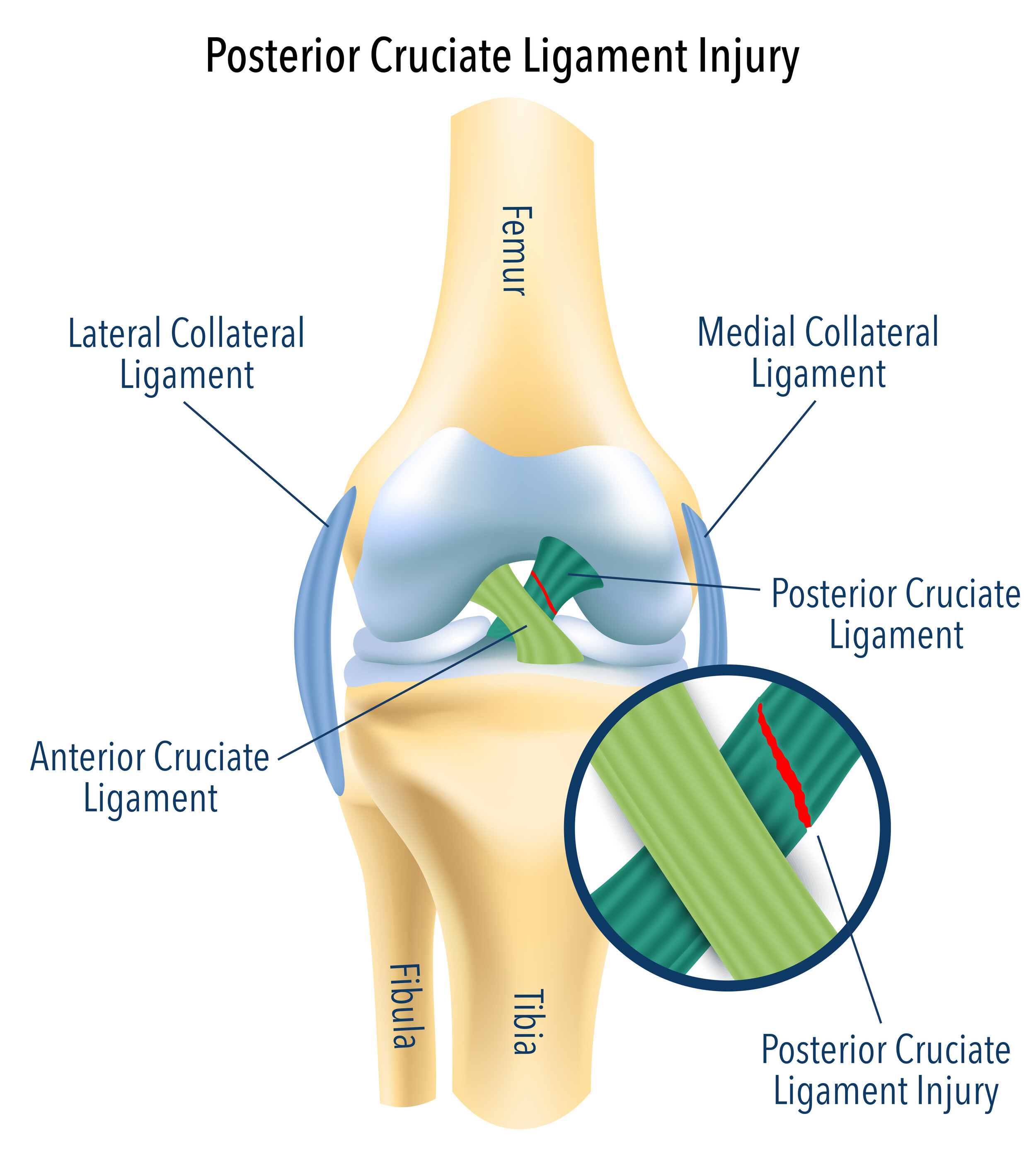Posterior Cruciate Ligament (PCL) Injury
What is a posterior cruciate ligament injury?
The posterior cruciate ligament connects the back of the femur bone to the back of the tibia bone. It is the strongest ligament in the knee and the least likely to be injured. It prevents the tibia from slipping backwards on the femur.
A PCL injury usually requires a significant force that can come in the form of a direct blow to the knee, a dashboard injury in a car, or an athlete falling on a knee in the bent position.
An injury to the posterior cruciate ligament is graded by its severity:
Grade 1 sprain: There is mild damage to the ligament, which becomes slightly stretched. However, it will still keep the knee joint stable.
Grade 2 sprain: There is moderate damage to the ligament, which remains intact but becomes loose. The ligament is partially torn.
Grade 3 tear: There is severe damage to the ligament, which is completely torn.
This injury may occur in isolation. However, it frequently occurs along with damage to other ligaments within the knee (multiligament injury).
What are the symptoms of a posterior cruciate ligament injury?
Patients experience pain and swelling within the knee. This may cause them to walk with a limp. The knee may also feel unstable, as if it might give out.
An MRI scan will determine the severity of the injury and check whether any other ligaments within the knee have been injured. Mr Pai may also organise stress X-rays of the knee to quantify the amount of translation of the tibia to the femur.
How do you treat a posterior cruciate ligament injury?
When a PCL injury occurs in isolation and is grade 1 or 2 in severity, it is managed non-operatively and may require fitting of a special brace designed to push the tibia forward on the femur. Compliance with bracing is crucial to successful healing of the PCL.
It is important to have a functional rehabilitation program involving the quadriceps muscle. A strong quadriceps muscle can overcome the laxity from a PCL injury.
In the case of a grade 2 injury that has failed non-operative management or grade 3 injury, Mr Pai will assess your situation and functional demands to determine whether surgically reconstructing the PCL ligament is appropriate.
What does surgery for a posterior cruciate ligament injury involve?
A PCL reconstruction can be performed for a complete tear. The PCL doesn’t heal by itself in this setting, so the reconstruction will require graft tissue. Depending on the nature of your injuries, Mr Pai may use your hamstrings tendon, quadriceps tendon, a synthetic ligament, or cadaveric allograft tissue.
Bony tunnels are made in the femur and tibia bone that correspond to the origin and insertion site of the PCL. The graft is then threaded through these tunnels and held in place with small screws.
Other injured ligaments may be repaired during the same surgery.
After the operation, you will be placed in special brace that allows the PCL graft to heal without stretching.

